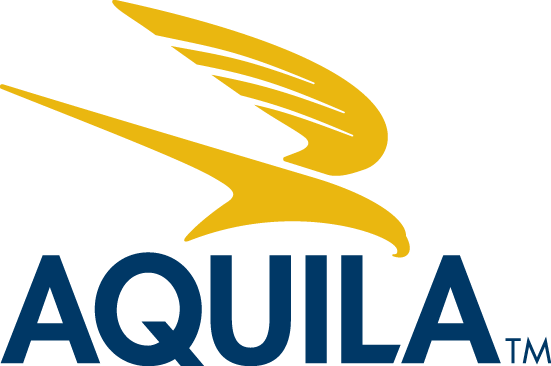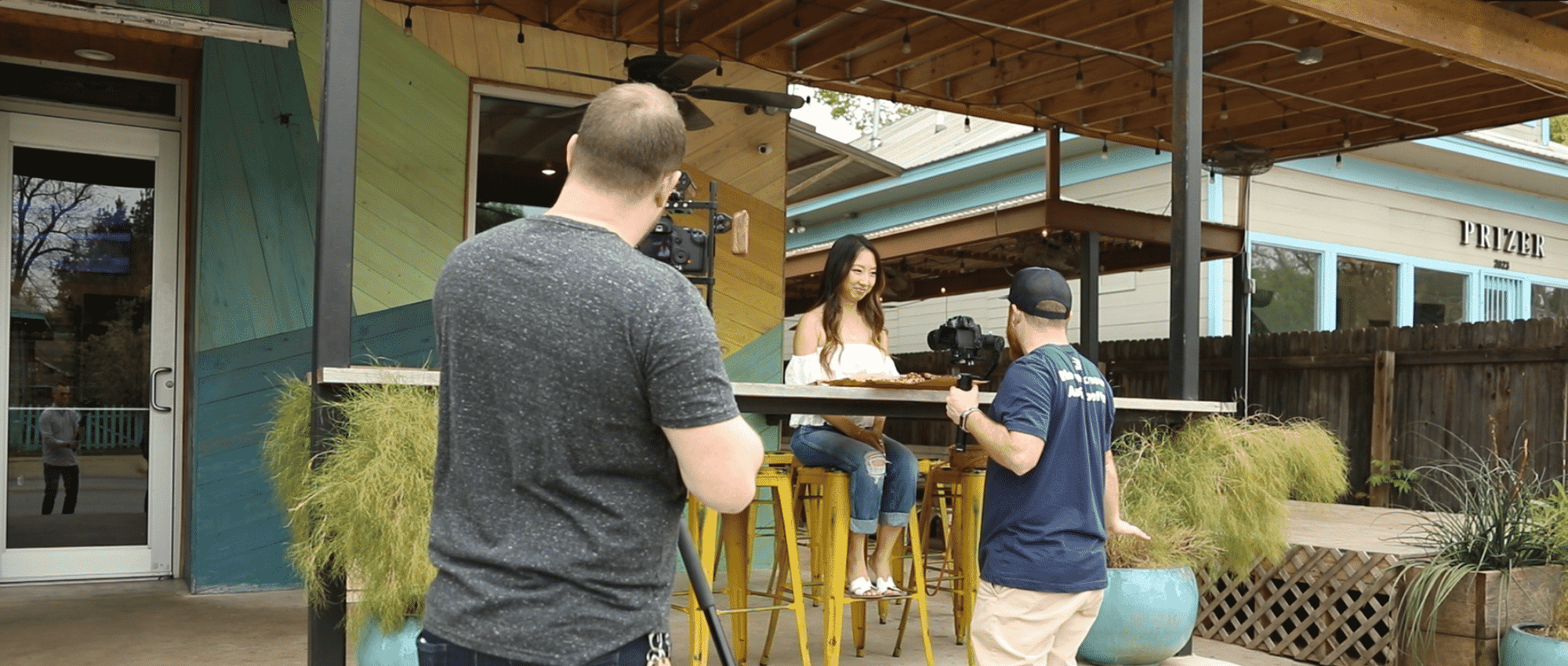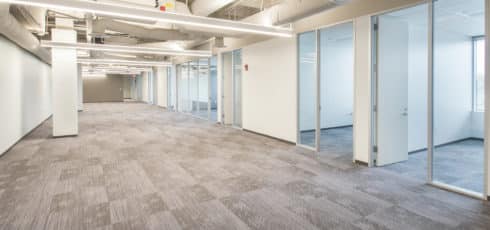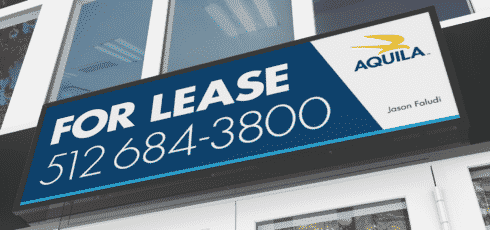This article was originally published in March 2020 and will not be updated. Please contact us if you have specific questions regarding the information in this article.
When marketing a commercial property, video can be a powerful tool. While videos for commercial properties used to be reserved for high-dollar new developments, owners and landlords are now using video to promote projects of all types.
Read Next: The Ultimate Guide to Commercial Real Estate Marketing
At AQUILA, we believe every project has a story and that video is a critical tool in telling that story. Video has the unique ability to evoke emotion in a way that other marketing mediums cannot, making it a powerful storytelling tool.
After producing dozens of property videos, we have identified seven key types of videos that are most useful in helping market a commercial property. In this article we will:
- Identify seven types of property marketing videos
- Outline the popularity of each type in commercial real estate today
- Describe what these videos typically entail
- Explain what type of properties each video is best suited for, the ideal length, and the cost to produce
Plus, we will share examples of property videos to serve as inspiration for your next property video campaign.
1. Drone Videos
Probably the most common property video is the drone video. Due to the increase in drone use, the cost to produce drone videos has dropped dramatically in the past few years, leading many property owners to utilize drones to create videos for their commercial properties.
Drone videos are especially useful for marketing land and, sometimes, industrial buildings since they can capture perspective and scale that a handheld camera cannot. It can be a useful storytelling tool when trying to paint a picture of the location, access, views, or nearby features or amenities.
AQUILA Pro Tip
Drone Video Isn’t Right for All Properties
For larger office campuses or new developments, drone-only video sometimes falls flat because it lacks the imagery to tell the full story of a property. In that case, we find property tour videos and value proposition videos better storytelling tools.
Because of the lack of variety in shots available, you should try to keep drone videos short – generally a minute or less.
Drone video can be captured cost-effectively and is a good way to produce a marketing video if you’re on a tight budget. AQUILA has worked with companies like DroneBase which can provide basic drone video clips for less than $500. Final, edited, videos can range from $500 to $3,000. The ultimate cost will depend on the firm you use, how many shots you want, the length of the final video, and the complexity of any graphic overlays.
Remember, when sending an operator to capture drone video, consider things like weather, time of day, and time of year. Drone images shot in the “golden hour” of sunrise or sunset can really make a building pop, and land shoots during the spring when the grass is green are often more appealing than winter shots when the land is brown and murky.
2. Property Tours
Another common type of video used to market commercial properties is the property tour video. These videos often combine drone footage with other B–roll of the property and sometimes still photography or renderings to show off various views and features of the property.
Property tour videos are excellent for showcasing existing buildings. They are a great way to highlight building exteriors, on-site and nearby amenities, and to show off cool existing tenant spaces and common areas. Most of the time you see these videos leverage graphic overlays to narrate the video, but we’ve seen good examples with voiceovers or interviews as well.
Property tour videos are generally a good sales tool to have for any project, but can be especially useful for properties that have recently been renovated or that people in the market haven’t had the chance to tour yet. They can also be a helpful sales tool for buildings that are far out or difficult to get to since they allow the audience to experience the property without ever leaving their desk.
Videos in this genre generally range in length from 30 seconds to two minutes, depending on the scope and scale of the property but generally hover in the one to one and a half-minute range.
These videos are more costly to produce than drone videos, but generally not very expensive, and can usually be produced for under $5,000.
3. Tenant Testimonial Video
Tenant testimonials are less frequently used in marketing commercial real estate, but, when done well, can be extremely powerful. Producing testimonials with existing tenants is the ultimate form of social proof. Having an outside source speak about why your property is a great place helps create trust with future prospects.
When you utilize social proof successfully, you convey to potential customers that buying your product or service is the safe thing to do. Doing this is central to the success of the sale because people are risk-averse.”
– David Hoffeld, How to Use Social Proof to Sell Better and Faster
Plus, tenants can often speak to things you cannot such as quality of service from property management or ease of working with ownership. Additionally, sometimes in these interviews, tenants point out features of your property that are beneficial to their business that you might not have even thought of or realized.
These videos generally feature an interview with a company executive paired with B-roll of the tenant’s space, the building, and/or nearby amenities.
AQUILA Pro Tip
Film Your Interviewee in Their Office Environment
When filming tenant testimonials also try to capture environmental shots of the interviewee experiencing the real estate or collaborating with colleagues in their space.
Tenant testimonial videos are best for existing buildings or campuses with tenants already in place. They can also be used to market new developments that have a significant pre-lease tenant secured to help generate interest in the rest of the space.
When pursuing a tenant testimonial video project, it’s often most beneficial to target the biggest or most recognizable tenants in your project. Also, make sure to get the right executive on camera. In this digital age, most C-level executives have on-camera experience and can speak eloquently, but a bad interviewee can jeopardize a project.
Videos like this are generally one to two minutes, depending on how much they have to say, but usually fall on the shorter side to keep a viewer’s attention.
The cost for these videos is usually more than property tours because you’ll need time to interview the stakeholders and edit together a story out of their responses, but less than other types of videos you might produce. Still, they can be shot and edited fairly quickly, especially if the person you are shooting is good on camera.
Examples of tenant testimonial videos to check out:
4. Digitally Rendered Video
A growing trend in commercial real estate marketing is producing digitally rendered videos to help prospects visualize new developments or major redevelopment projects. Popularized by residential developers, these videos are now working their way into mainstream campaigns for office and industrial developers as well.
There are two main types of digitally rendered videos that you will see in the marketplace today: those promoting properties or buildings and those showing off specific spaces.
Property videos are basically a property tour video, but instead of having live footage, they utilize digitally rendered images of buildings to showcase properties that don’t exist yet or properties that are set to undergo major renovations. Sometimes you’ll see buildings rendered into actual drone footage of an area like is seen at 1:37 in AQUILA’s Mueller Business District video.
Space-specific videos are essentially the same concept but instead of featuring an entire property, they only feature fly-throughs of a specific space. These videos can help prospective tenants visualize what a space could look like if it were renovated, built out, or demised.
Both types of digitally rendered videos are often set to music and feature narrative graphic captions or voiceovers. Some digitally rendered videos also weave in live footage of surrounding amenities or clips of B-roll that ties in and helps paint a picture of the vision for a property. The production quality for these types of videos can span a wide range depending on the quality of the renderings and the additional footage that is woven into the film.
Because production quality spans such a wide gamut, the cost to produce digitally rendered videos can vary greatly, but, in general, is much more significant than other video types.
Short, simple fly-through videos from an architect can be produced for $10,000 to $15,000. Because of this pricing, these videos tend to make sense for large to mid-sized availabilities.
For building/property videos, costs can range from $20,000 to upwards of $250,000 depending on:
- The scale, type, and detail of the building you are modeling
- Number of scenes you want to be rendered and the length of the clips
- Whether or not people are included, either digitally or with live actors
Because of these significant costs, these videos make sense for significant new developments or redevelopments that have hearty marketing budgets.
There is a wide range in the length of these videos from as short as 30 seconds to as long as three to four minutes. The best videos in this genre we’ve seen sit right in the one to two-and-a-half-minute range.
5. Value Proposition Video
Value proposition videos are just what the name implies: they show viewers the value the property can provide to tenants. Different than property tours, these videos go further than highlighting key amenities and give viewers insights into specific details that might not be brought to light in a tour video.
Generally, these videos highlight a key stakeholder such as a developer/owner, leasing broker and/or architect in an interview-style setting. Interesting B-roll of nearby amenities or building images (either live or digitally rendered) can be layered on top to add interest and support the narrative of the stakeholder.
Value proposition videos are suitable for a wide range of properties – from office and industrial to retail and even land. They generally fall in the one-and-a-half to two-and-a-half minute range.
The cost for these videos depends on the length of the video, the number of stakeholders interviewed and the amount of time needed to capture the B-roll or any digitally rendered footage used. The more people interviewed and the more extensive the assets needed, the higher the cost.
6. Property Commercial
A new type of video that is emerging in commercial real estate marketing is the property commercial. These videos go beyond a simple property tour or interview and are more like a commercial you might see on TV. Like commercials on TV, these videos help to tell a story, are typically highly scripted, and tend to go further than a traditional property marketing video in attempting to evoke emotion from a viewer.
These videos often feature a voiceover that provides narration, but sometimes simply utilize background music. They can feature a wide range of B-roll including lifestyle imagery, footage of the building and surrounding amenities, drone clips, and even digitally rendered segments.
These commercials are usually on the shorter side – from 30 seconds to one and a half minutes – in order to keep a viewer’s attention.
The cost for property commercials can vary greatly depending on how much custom footage is shot, if actors are used, and if digitally rendered clips are included.
7. Influencer/Lifestyle Video
Another emerging genre of promotional video being utilized to market commercial real estate is the lifestyle or influencer video. These videos are generally used to tell the story of a location or neighborhood where a commercial property is located. Mainly used to market office properties, these videos utilize B-roll of surrounding amenities to paint a picture of what it would be like to office in the location.
Influencer marketing has become a key promotion method for brands outside of the commercial real estate industry and CRE marketers are taking note and beginning to collaborate with influencers to help narrate these lifestyle videos. Marketers can leverage influencers to help promote locations where they are trusted voices or subject matter experts. Similar to tenant testimonials, collaborating with an influencer can help bring outside authority and trust to your property’s brand and have someone else do the selling for you.
For example, AQUILA produced a series of videos featuring food and lifestyle influencer Jane Ko, tastemaker behind A Taste of Koko Blog. In these videos, Jane highlights the unique food destinations in the East Cesar Chavez corridor where AQUILA is marketing the Eastlake at Tillery office development.
An influencer can mean many things. While many people think of influencers as Instagram moguls with insights into fashion, food, and travel, there’s more to it. Anyone who is considered an authority in their industry and who has an audience can be considered an influencer.
According to Influencer Marketing Hub, an influencer is someone who has:
- The power to affect the purchasing decisions of others because of his or her authority, knowledge, position, or relationship with his or her audience.
- A following in a distinct niche, with whom he or she actively engages. The size of the following depends on the size of his/her topic of the niche.
These videos tend to be 30 seconds to two minutes. We’re starting to see more videos of this nature come in at just under one minute so they are optimized for channels like Instagram.
The cost for these videos can vary greatly depending on the intricacy of the shoot as well as the fee for the influencer used. Influencer fees can range from hundreds of dollars to hundreds of thousands of dollars depending on that influencer’s status and reach.
AQUILA Pro Tip
Budget for All the Incidentals
When budgeting for an influencer video don’t forget to factor in the cost for things like hair and makeup, location fees, props such as food, and other incidentals that may be needed during filming.
In recap, video is becoming a must-have tool for leasing teams and there are numerous ways video can be leveraged to help market and tell the story of your commercial property. If your leasing firm is not integrating video into your property marketing campaign, it may be time for you to hire a new leasing team.
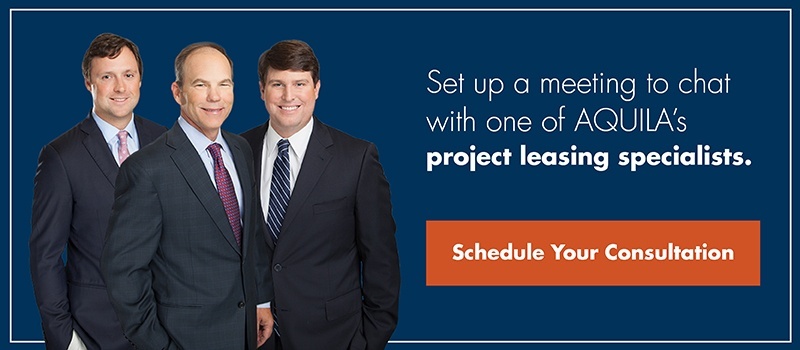
To learn more about putting together a successful property marketing campaign, check out these helpful articles:
- 10 Best Examples of Commercial Real Estate Video Marketing
- How Much Does It Cost to Market a Commercial Property?
- 4 Benefits of Professional Photography for Commercial Real Estate
- 7 Things That Should Be on Your Property Website

